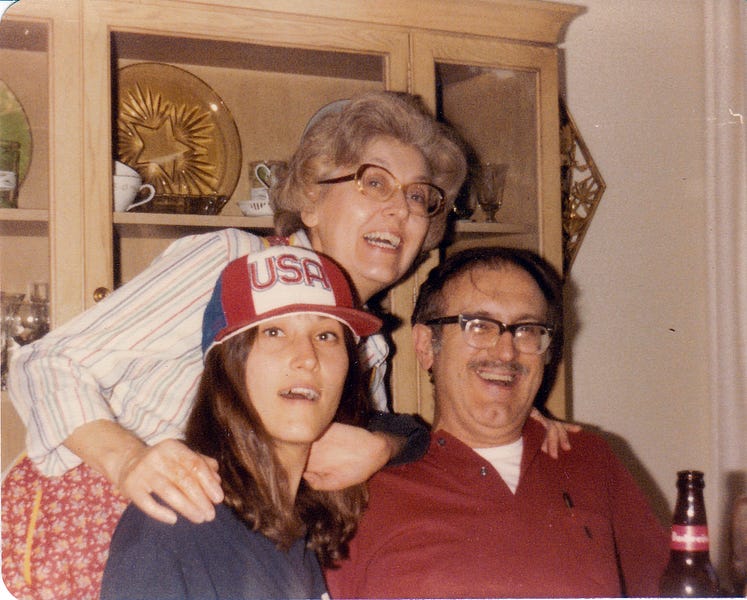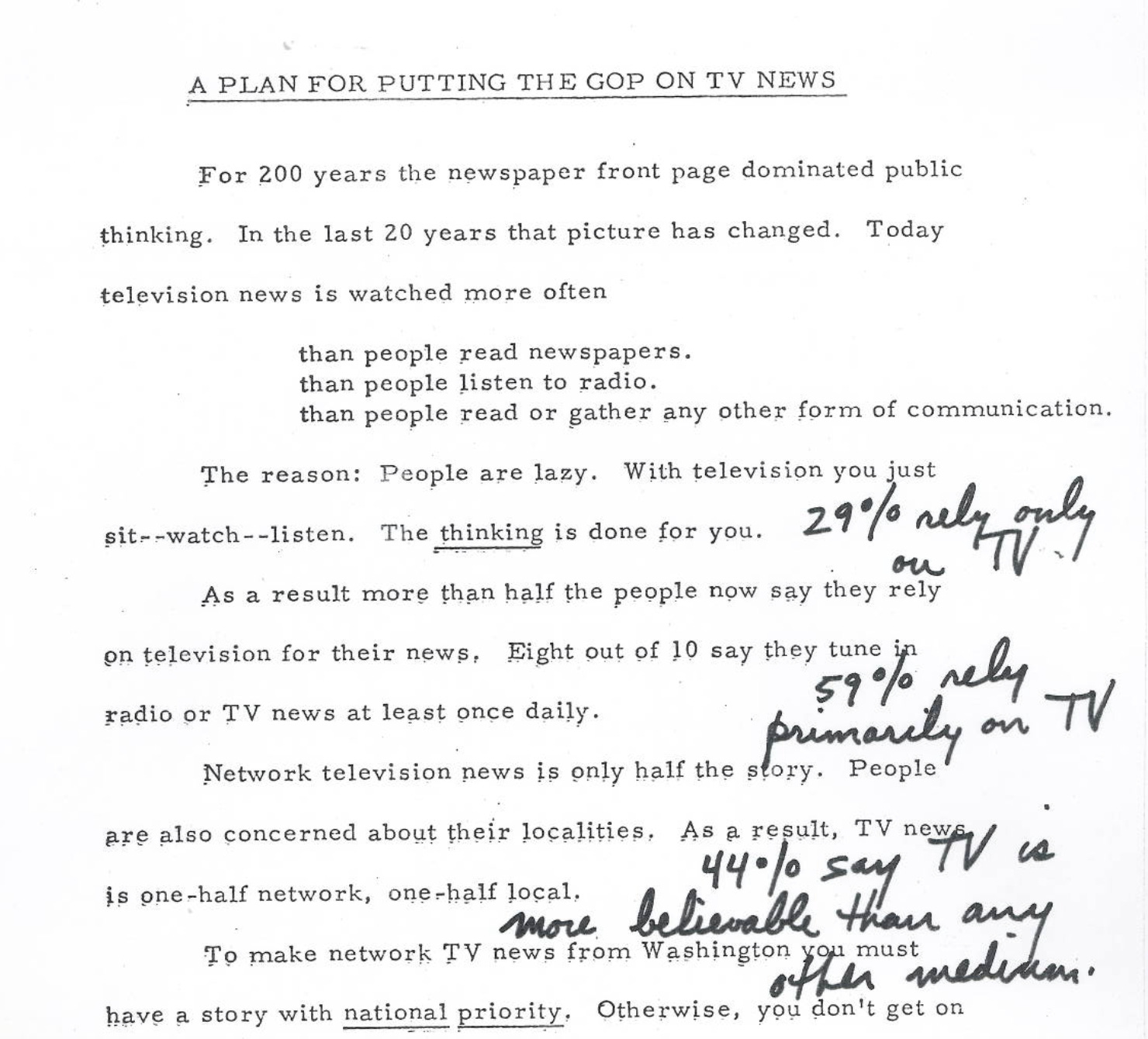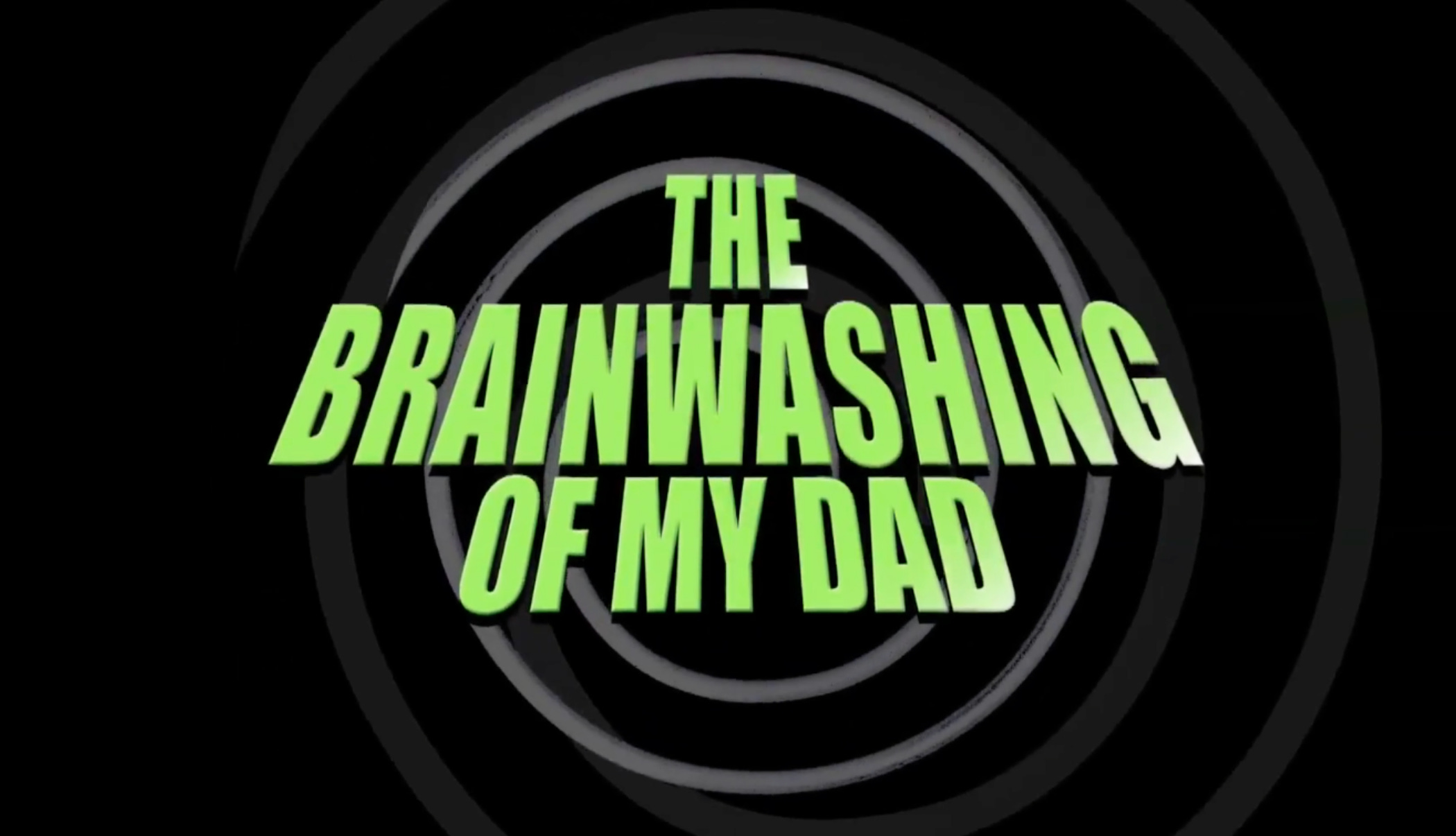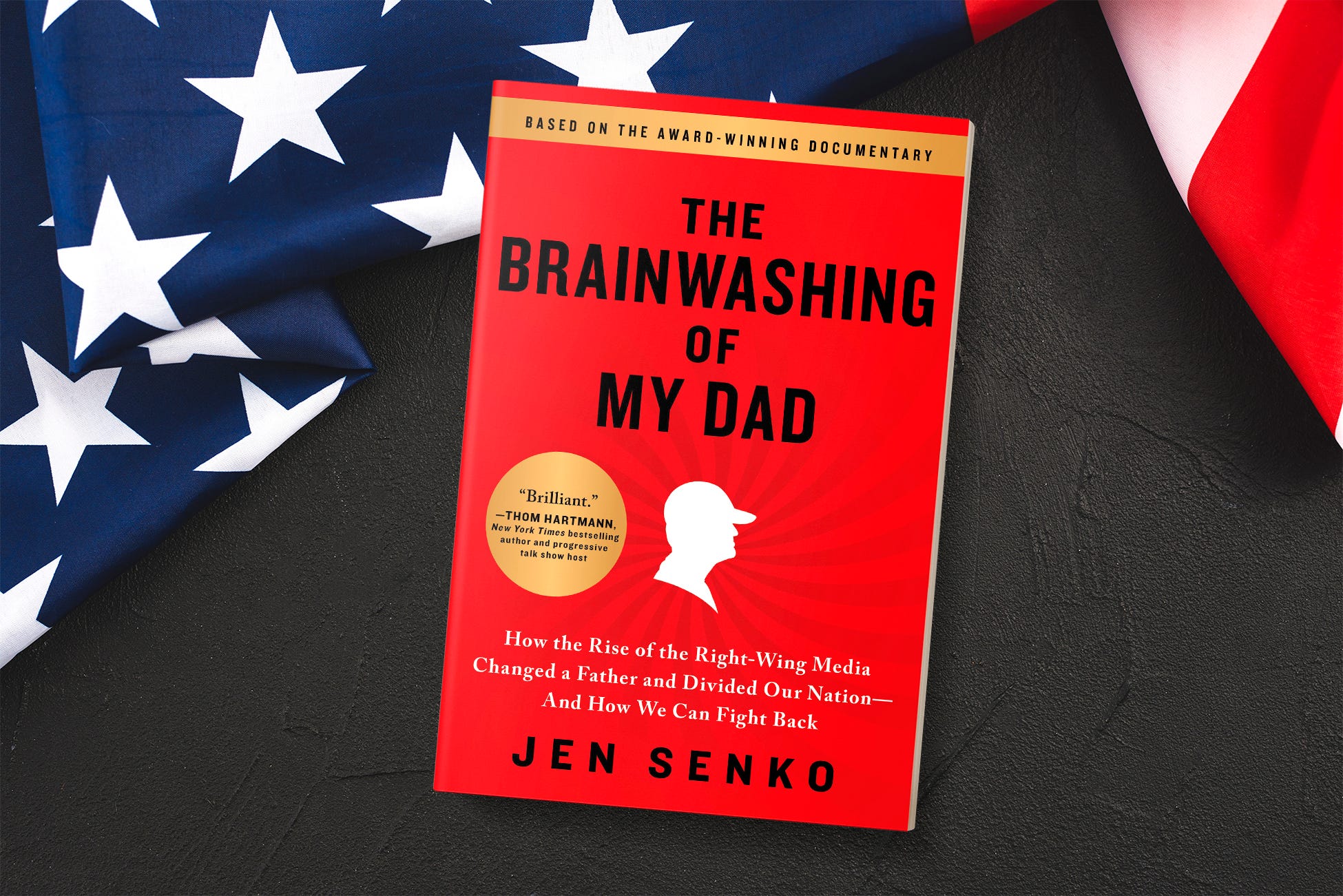
Unprecedented is an ad-free newsletter dedicated to exposing the dangerous lies, stupidity and corruption of today’s GOP. It’s FREE to read and subscribe, although if you’d like to select a paid subscription, I certainly welcome the support.

Here’s the truth: Fox News viewers are lazy. They just sit—watch—listen. They’re easy to manipulate because they want their thinking done for them.
How do I know this? Because Roger Ailes told me. He says it in “A Plan for Putting the GOP on TV News,” a 15-page memo he wrote while in the Nixon White House in 1970:

Roger Ailes was finally able to prove his point when Rupert Murdoch hired him to launch Fox News in 1996. And he’s been proving that point ever since: People are lazy. With television you just sit—watch—listen. The thinking is done for you.
I learned about the Ailes memo—plus a whole lot more about the “vast right-wing conspiracy” to pollute American journalism and control our lazy minds—in Jen Senko’s 2016 documentary The Brainwashing of My Dad.
While the movie is a timely as ever as we head into 2022 and beyond, it’s now available in book form, too.
So I invited Jen Senko to answer a few questions about what she learned making her film—and what she’s learned since.
“The Brainwashing of My Dad”: Q&A with filmmaker and author Jen Senko
What prompted you to make your 2016 documentary The Brainwashing of My Dad?
What prompted me to make my documentary was a great sense of alarm that gripped me from watching the radical changes I was witnessing in my father's personality after his retirement when he discovered talk radio and other right-wing propaganda. More urgently, other than my dismay at my dad’s distressing personality change from an open-minded nonpolitical Kennedy Democrat to a raging right-wing zealot, I had a sense of foreboding about what harm this flood of extreme “conservative” media that focused on demonizing Democrats was slowly doing to the country.
In the late 90s I saw similar changes happening in two of my best friends. Occasionally they would even come out with the same pronouncements that my dad would make at around the same time my dad would make them. They would even use the same wording (for instance, “there is no such thing as organic”). It was apparent to me that this was due to a coordinated echo chamber. Also, there was the anger, dismissiveness and indignation ready to ignite at any provocation or even without one. I felt like I was living the movie, “The Invasion of the Body Snatchers.” Who else would it happen to that I knew? (It eventually turned out to be several friends and relatives).
Eventually I understood that, as Hillary Clinton had said in 1998 on the Today Show, there was a “vast right-wing conspiracy.” I believed I was witnessing it happen. I felt that I understood how it was mainlined directly into millions of Americans with the carefully crafted use of language and messaging, outright lies, and feigned emotion and anger from the hosts of these shows who continually pushed the envelope of hate.
So, by the near completion of the documentary, I wanted every rational American's hair to be on fire such as mine was. I naively thought I might be able to motivate our elected officials to at least take a serious look at this propaganda designed to divide. Additionally, I hoped to inspire ordinary people to organize and/or reach out to their representatives to make them aware that this must be a major issue of concern they had to address before it got out of control—or was too late to come back from.
Your film talks a lot about two people: Roger Ailes and Rush Limbaugh. What did you learn about them and their influence?
Limbaugh and Ailes were almost like two peas in a pod. Limbaugh even said after meeting Ailes, it was “like finding a soulmate.”
Ailes knew long before Limbaugh came on the scene what made good television and how to make it persuasive. He also knew that if the news media continued to be objective and to tell the truth, like it eventually did about the Vietnam War, it was likely that the favored G.O.P. candidates such as Nixon, might become unpopular. Thus, he tried to get the Nixon White House interested in a plan called, “Plan For Putting the GOP on TV News.” He said, “If you tell people what to think, you’ve lost them. But if you tell them how to feel, they’re yours.” That’s what he and Limbaugh were masters at: pushing emotional buttons.
The difference with them is that the actual intent of Roger Ailes in creating Fox for Rupert Murdoch was to turn viewers into Republican voters. Fox was built to brainwash. For Rush Limbaugh, his shtick was mostly about the money. He was rewarded handsomely by a vast and rich right-wing apparatus. So, without a troubled mind, he, often being the only talk show host available midday thanks to the demise of the Fairness Doctrine, turned millions of people into extreme conservatives who took issue or took aim at Democrats and liberals and their principles. Right-wing Republicans loved him as he did their dirty work for them and even got Limbaugh aired on military bases, radicalizing our men and women whose purpose was supposed to be protecting the entire country.
Roger Ailes for 3 years between ’93–’96 produced a Rush Limbaugh TV show. Limbaugh’s TV show was a crucial breakthrough for TV politics and paved the way for Ailes and Fox. There was never a debate and included his uncontested lies and inaccuracies and was a full half hour of all Limbaugh all the time.
Together, separately their influence on Americans and America was profound. Catastrophically they convinced millions of Americans to vote against their own interests, to vote with oligarchs and to fear, hate and blame their countrymen and women who didn’t share their libertarian and anti-liberal views. Ailes and Limbaugh belong with the Jim Joneses, David Koreshes and Charles Mansons in the annals of history.
Watching your film today, we see many parallels between Trump and Nixon. You tell the story of how construction workers were incited to attack anti-war protesters in lower Manhattan in 1970. How similar was that event—and the President's reaction—to the January 6th insurrection?
On May 8th, 1970 a preview of January 6th, 2021 took place. After Nixon ordered the invasion of Cambodia which had instigated the protest at Kent State University that led to four students being shot to death by the Ohio National Guard, a protest took place at Federal Hall in lower Manhattan. More than a thousand anti-war protesters, most of them students, demanded an end to the war in Vietnam and Cambodia. Right in the middle of this anti-war rally this marauding army of construction workers came marching in and started beating the protestors with their hardhats and kicking them with their steel-toed boots. Some carried U.S. flags. They easily broke through the police line. It was all captured on film and shown on the evening news.
Rather than excoriate them, Richard Nixon invited Peter Brandon, the head of the NYC construction workers’ union to the White House. Peter Brandon presented a ceremonial hardhat to Nixon which Nixon proudly (but ridiculously) wore. ‘Nuff said? Nixon embraced the divisiveness because it served him.
But as far as we know, at least Nixon didn’t help plan and encourage the Hard Hat Riot. We all know that Trump took this so-called “Stop the Steal Rally” to the ultimate level and hoped to overthrow our government and place himself as dictator for life.

Your movie shows how Rush Limbaugh and Fox News—in concert with the GOP—were able to move all of the media to the right over the course of two or three decades. How have they changed journalism? Can anything be done to fix it?
After Barry Goldwater lost to President Johnson in a landslide and the Right was declared dead by pundits, the Right realized they had to step up their game—via the media. So, they established a couple different organizations that marketed the notion of “Liberal Media Bias” to the public. In 1969 one of them was called Accuracy in Media (AIM) which was established by Reed Irvine who had worked in the Nixon administration. Organizations like AIM were set up to discredit the media and lay the groundwork for a vast right-wing media to come.
Members of these organizations would turn out in force to quickly criticize media that they felt didn’t serve their purpose. The unremitting and coordinated accusations of “liberal media” resulted in intimidating media to where they ended up falling all over themselves by actually leaning Right and favoring Republicans. And no matter how hard they tried to please the Right, it was never enough for the oligarchs.
Science shows that if a lie is repeated often enough it begins to sound true. Soon most of America bought the prevarication of “the liberal media.”
The Right also pushed this notion of balance and fairness to the “two sides” rather than objectively discerning the truth of conflicting claims. Giving credit to both sides gave millions of Americans the harmful belief that the scientific consensus on global warming was undecided. Today this notion of “fair and balanced” is finally being recognized as not good journalism and it’s even been dubbed, “both-sides-ism.” Journalists now more than ever, must be more urgently focused on the truth and not let themselves feel bullied by an ever-increasing dictatorial Right.
One of the best ways to fix journalism is to start local. We need to support/nourish independent local news—especially newspapers, which are the backbone of local and regional journalism. Increasingly, these smaller community-focused outlets have been going extinct.
Here are some people with good ideas on how to fix journalism: Jay Rosen, George Lakoff, Robert McChesney with John Nichols have a proposal called The Local Journalism Initiative where tax money would be provided to every county yearly to pay for nonprofit journalism, Mark Histed and Democracy Policy Network are working on news vouchers, Steven Waldman with the help of Senator Cantwell is pushing the LJSA plan which are tax credits to boost journalism, to name a few. I just mention these names rather than go into all the particulars because this subject could warrant an entire article. This way the reader has the option of looking them up for more detailed information.
You’ve talked to a lot of people who’ve watched family members become enraged and unreachable after excessively listening to or watching right-wing media. What hope or advice can you give people dealing with “Cult Republicans” in their families today?
If brainwashed family members are really entrenched, it may be very difficult to rescue them; impossible in some instances, but many are reachable and we should try to reach them. If you can catch them before they fall too far down the rabbit hole, then there’s more possibility that you can help guide them back with a lot of patience and love.
It also depends on what you want. If you just want to get along with them and maintain a relationship you will most likely have to tell them that since your relationship with them matters it’s best not to talk about politics and change the subject. My personal experience is that half the time they respect that wish and half of the time they do not.
If you want to try to reach them and have a conversation about what they believe, first start with diffusing their amygdala. In other words, if they are already angry, they will only get more riled up if you start out by telling them they are wrong or even by giving them a fact that contradicts or proves wrong what they believe. One of the best approaches is to first find common ground; something you both agree on. Make them feel safe, that you are not judging them. Then try Socratic questioning or then try debunking something.
If you would like some guidance in talking to them, try the group HearYourselfThink.org. Like me, they saw all this coming years ago. They offer helpful presentations and trainings. If you have some change to spare, you can try cult expert, Steven Hassan (author of “Cult of Trump”). His actual profession (in addition to running the Freedom of Mind Resource Center and authoring other books on the subject) is deprogramming people in cults.

Your book The Brainwashing of My Dad just came out, five years after the movie's release. What have you learned since the film? What can readers expect from the book?
I’ve learned that it takes a very long time for people to change their thinking and to realize they, like the frog, are actually in boiling water. It takes even more to get people to act. The good thing is that now there are media activists and grassroots groups sprouting up that are focused on what can be done about right-wing media and the insidious effect it has had and is still having on our nation. I just hope it’s not too late.
Readers can expect to be given more information on the history of the “vast right-wing conspiracy,” how it happened, how red flags (like mini coups) were not called out for what they were. But it also provides light and hope—it tells the story of how my mom saved my dad from the clutches of right-wing media and in his last years was once again himself. It has others’ personal stories of both woe and success that one could gain comfort by or gain inspiration and get ideas by. It has a chapter which offers explanations of what happens in the brain and maybe most importantly, a chapter on what we can do to fix the media and hopefully help our loved ones and our country.
See also: February 2022 follow-up interview: The Brainwashing of Our Troops.
Further reading: The Brainwashing of My Dad, by Jen Senko.
Follow: @jen_senko on Twitter.
Follow: @brainwashingdad on Twitter.
Like: The Brainwashing of My Dad on Facebook.
Watch: The Brainwashing of My Dad on YouTube.
Visit: The Brainwashing of My Dad website.
Subscribe to Unprecedented
Subscribe to the newsletter and unlock access to member-only content.